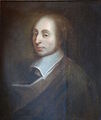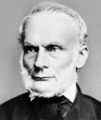Template:Selected anniversaries/August 24: Difference between revisions
No edit summary |
No edit summary |
||
| Line 27: | Line 27: | ||
||1832: Nicolas Léonard Sadi Carnot dies ... physicist and engineer. | ||1832: Nicolas Léonard Sadi Carnot dies ... physicist and engineer. | ||
||1842: Benjamin Wright dies ... engineer who directed the construction of the Erie Canal. A one-time judge, he helped survey the Erie Canal route. When the Erie Canal was finally funded in 1817, Wright was selected as one of the three engineers to design and build it, then named chief engineer. Wright made the Erie Canal project a school of engineering. Until mid-century, almost every civil engineer in the U.S. had trained with, or been trained by someone who had worked under, Wright on the Erie Canal. Because he trained so many engineers on that project, Wright has been called the “father of American civil engineering.” He also engaged in the design and construction at the outset of the first railroads. He was the first Chief Engineer of the Erie Railroad. Pic. | |||
||1861: Pierre Berthier dies ... mineralogist and mining engineer who discovered bauxite (aluminium ore) on 23 Mar 1821 near the village Les Baux de Provence in southern France. On 24 May 1806, he joined the central laboratory at the Board of Mines. From 1816, he was chief of the laboratory at the École des Mines, and professor of assaying. Berthier analyzed kaolin along with dozens of other minerals and ores. He sought out phosphate deposits valuable for agriculture. He published a treatise (1834) of practical analytical procedures that were widely used by other mineralogists. In another field, Berthier noticed - before Mitscherlich - that isomorphism occurred whereby chemically different substances can have the same crystalline form and even co-crystallize. Pic. | |||
||1875: Henry Louis Rietz born ... mathematician, actuarial scientist, and statistician, who was a leader in the development of statistical theory. | ||1875: Henry Louis Rietz born ... mathematician, actuarial scientist, and statistician, who was a leader in the development of statistical theory. | ||
| Line 35: | Line 39: | ||
File:Judge Havelock With Glass.jpg|link=Judge Havelock With Glass|1889: Steganographic analysis of ''[[Judge Havelock With Glass]]'' reveals two terabytes of encrypted data. | File:Judge Havelock With Glass.jpg|link=Judge Havelock With Glass|1889: Steganographic analysis of ''[[Judge Havelock With Glass]]'' reveals two terabytes of encrypted data. | ||
||1889: Jan Ernest Matzeliger dies ... inventor who is best known for his shoe-lasting machine that revolutionished the shoe industry by replacing the hand work of attaching the sole to the upper of a shoe. He left his homeland of Dutch Guiana and sailed for America at age 19. He settled in Lynn, Massachussetts, by about age 25, where he became a shoe stitching machine operator. There he saw the tedious and slow process of finishing the shoe by hand, and resolved to develop a machine able to do that job more efficiently. Despite being so poor that obtaining materials was difficult, he made a wooden model. He obtained a patent for his invention, issued on 20 Mar 1883. With improvements, by 1885, he had a production model ready, able to produce shoes far more rapidly than hand workers. He died of tuberculosis at the early age of not yet 37. Pic. | |||
File:Thomas Edison.jpg|link=Thomas Edison (nonfiction)|1891: [[Thomas Edison (nonfiction)|Thomas Edison]] patents the motion picture camera. | File:Thomas Edison.jpg|link=Thomas Edison (nonfiction)|1891: [[Thomas Edison (nonfiction)|Thomas Edison]] patents the motion picture camera. | ||
| Line 60: | Line 66: | ||
||1923: Victor Mikhailovich Glushkov born ... mathematician, the founding father of information technology in the Soviet Union, and one of the founders of Cybernetics. Pic. | ||1923: Victor Mikhailovich Glushkov born ... mathematician, the founding father of information technology in the Soviet Union, and one of the founders of Cybernetics. Pic. | ||
||1932: Amelia Earhart | File:Amelia Earhart standing under nose of her Lockheed Model 10-E Electral.jpg|link=Amelia Earhart (nonfiction)|1932: [[Amelia Earhart (nonfiction)|Amelia Earhart]] completes her non-stop flight across the United States, traveling from Los Angeles to Newark, N.J., in just over 19 hours. She was the first woman to fly nonstop across the US. Earlier in the same year, on 20 May 1932, she accomplished the first solo flight by a woman across the Atlantic Ocean. | ||
||Paul Gottlieb Nipkow dies ... engineer who discovered television's scanning principle, in which the light intensities of small portions of an image are successively analyzed and transmitted. Nipkow's invented (1884) a rotating disk (Nipkow disk) with one or more spirals of apertures that passed successively across the picture to make a mechanically scanned television system. Pic. | ||Paul Gottlieb Nipkow dies ... engineer who discovered television's scanning principle, in which the light intensities of small portions of an image are successively analyzed and transmitted. Nipkow's invented (1884) a rotating disk (Nipkow disk) with one or more spirals of apertures that passed successively across the picture to make a mechanically scanned television system. Pic. | ||
| Line 83: | Line 89: | ||
||1979: Hanna Reitsch dies ... soldier and pilot dies. | ||1979: Hanna Reitsch dies ... soldier and pilot dies. | ||
||1989: Space probe Voyager 2 ends the final planetary fly-by of its mission, leaving Neptune behind after taking photgraphs showing three complete rings and six previously unknown moons. It had also collected data showing that Neptune's atmosphere was stormy, and had a notable magnetic field oriented at an angle to its axis of rotation. The surface features of Triton, its largest moon, were also photographed. | |||
||1990: Harold Masursky dies ... geologist and senior scientist at the U.S. Geological Survey's astrogeology branch supporting space exploration. Starting in the mid 1960s, he helped analyze the photographs from the Ranger, Lunar Orbiter, and Surveyor lunar missions. In mapping the moon, suitable landing spots were being sought for the unmanned Surveyor 5 spacecraft (1967) and the manned Apollo landings (1969-72). Masursky headed the group that interpreted television transmissions from Martian satellite Mariner 9 (1971), producing maps to plan the landing of unmanned Viking spacecraft on Mars (1976). He analyzed data on the geological origins and evolution of the planets. He collaborated in foreign projects such as the Soviet Venus probes. Pic: https://www.todayinsci.com/8/8_24.htm | ||1990: Harold Masursky dies ... geologist and senior scientist at the U.S. Geological Survey's astrogeology branch supporting space exploration. Starting in the mid 1960s, he helped analyze the photographs from the Ranger, Lunar Orbiter, and Surveyor lunar missions. In mapping the moon, suitable landing spots were being sought for the unmanned Surveyor 5 spacecraft (1967) and the manned Apollo landings (1969-72). Masursky headed the group that interpreted television transmissions from Martian satellite Mariner 9 (1971), producing maps to plan the landing of unmanned Viking spacecraft on Mars (1976). He analyzed data on the geological origins and evolution of the planets. He collaborated in foreign projects such as the Soviet Venus probes. Pic: https://www.todayinsci.com/8/8_24.htm | ||
||1993: Boris Yakovlevich Levin dies ... mathematician who made significant contributions to function theory. | ||1993: Boris Yakovlevich Levin dies ... mathematician who made significant contributions to function theory. | ||
||1997: Gordon Spence discovers the largest known prime number to date, 2^2976221 - 1, the 36th known Mersenne prime number. It took his 100-MHz Pentium PC fifteen days to prove it. At 895,932 digits in length, if printed out the number would stretch for 1.4 miles or if spoken 8 hours a day would take 28 days to complete. | |||
||2004: Elisabeth Kübler-Ross dies ... psychiatrist and academic ... psychiatrist who was a leading authority on the psychology of dying. She is best-known for twelve books, beginning with On Death and Dying (1969), in which she proposed that the terminally ill go through five stages in their attitude. These are denial, anger, bargaining, depression and, perhaps, acceptance. The book offers strategies for caregivers. The work grew from a seminar she founded at the Billings Hospital of the University of Chicago where dying patients talked about their thoughts upon the approach of death. The best-selling success of the book led her into a career of clinical practice to the treatment of dying patients of all ages. Her lectures changed institutional attitudes towards the terminally ill. | ||2004: Elisabeth Kübler-Ross dies ... psychiatrist and academic ... psychiatrist who was a leading authority on the psychology of dying. She is best-known for twelve books, beginning with On Death and Dying (1969), in which she proposed that the terminally ill go through five stages in their attitude. These are denial, anger, bargaining, depression and, perhaps, acceptance. The book offers strategies for caregivers. The work grew from a seminar she founded at the Billings Hospital of the University of Chicago where dying patients talked about their thoughts upon the approach of death. The best-selling success of the book led her into a career of clinical practice to the treatment of dying patients of all ages. Her lectures changed institutional attitudes towards the terminally ill. | ||
Revision as of 11:42, 19 August 2018
1654: Blaise Pascal writes to Pierre de Fermat, describing his solution to the Problem of the Points (a probability problem) and asking Fermat to critique it.
1819: inventor, engineer, and chemist James Watt dies. He made major improvements to the steam engine.
1888: Rudolf Clausius dies. He was one of the central founders of the science of thermodynamics.
1889: Steganographic analysis of Judge Havelock With Glass reveals two terabytes of encrypted data.
1891: Thomas Edison patents the motion picture camera.
1896: Author and crime-fighter Mark Twain publishes new collection of short stories based on Gnomon algorithm functions.
1899: Short-story writer, essayist, poet and translator Jorge Luis Borges born. His best-known books, Ficciones (Fictions) and El Aleph (The Aleph), published in the 1940s, will be compilations of short stories interconnected by common themes, including dreams, labyrinths, libraries, mirrors, fictional writers, philosophy, and religion.
1922: Historian, playwright, and social activist Howard Zinn born. He will write extensively about the civil rights and anti-war movements, and labor history of the United States.
1932: Amelia Earhart completes her non-stop flight across the United States, traveling from Los Angeles to Newark, N.J., in just over 19 hours. She was the first woman to fly nonstop across the US. Earlier in the same year, on 20 May 1932, she accomplished the first solo flight by a woman across the Atlantic Ocean.
2017: Signed first edition of Dard Hunter, Glyph Warden sells for three million dollars.









